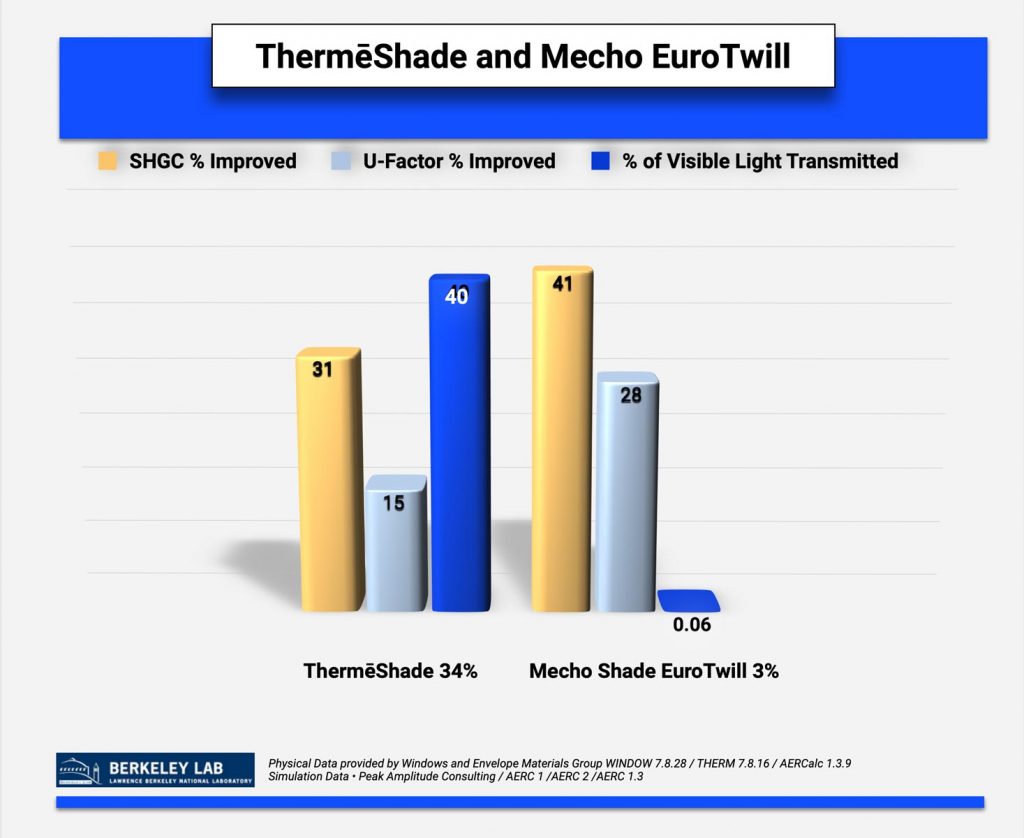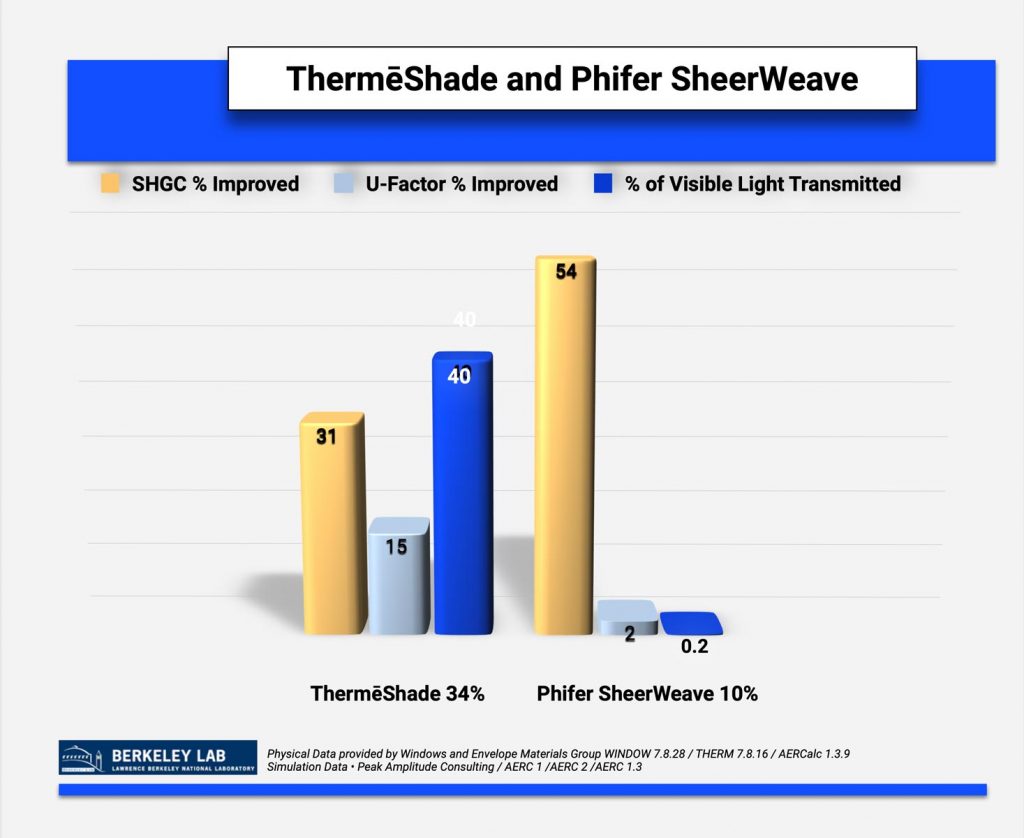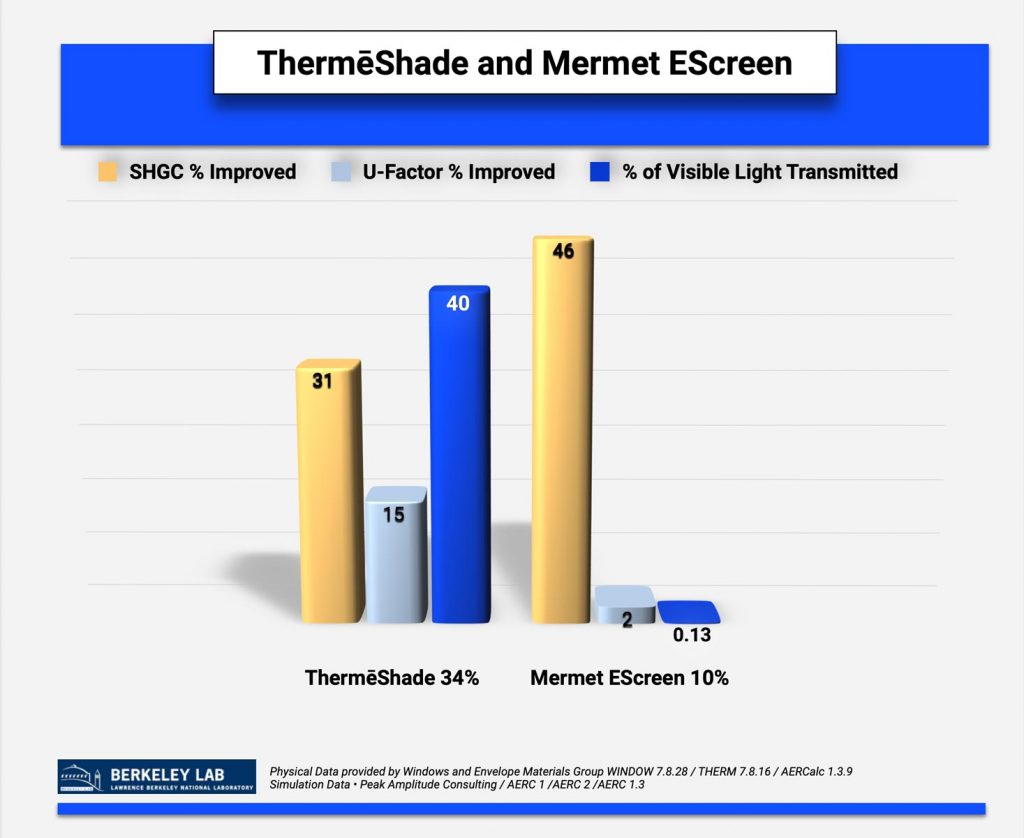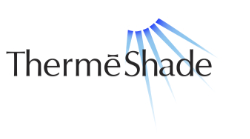Product Visibility
Visibility
is an invaluable feature in a window shade.
High amounts of visibility can preserve your views while letting light into your home or office.
Yet high amounts of visibility can come at a cost.
High visibility can cause heat and heat gain.
Therefore, it’s important to find the right balance of light to other performance values.
There are three important ways to evaluate window shades when they are added to a window system.
Visible Transmittance (VT)
This measures how well a shade is designed to effectively light your home or office with daylight.
Solar Heat Gain Coefficient (SHGC)
This measures how well a product can resist unwanted heat gain.
U-Factor (U-value)
This measures how well a product can retain heat and keep it from escaping from the inside of a room.
Below is a comparison of four window shades in a ‘Baseline Window B’ system which is a wood frame, spacer and two pieces of clear glass.
The percentages indicated next to each product name indicate ‘openness,’ which closely relates how much light is filtered through the shade.
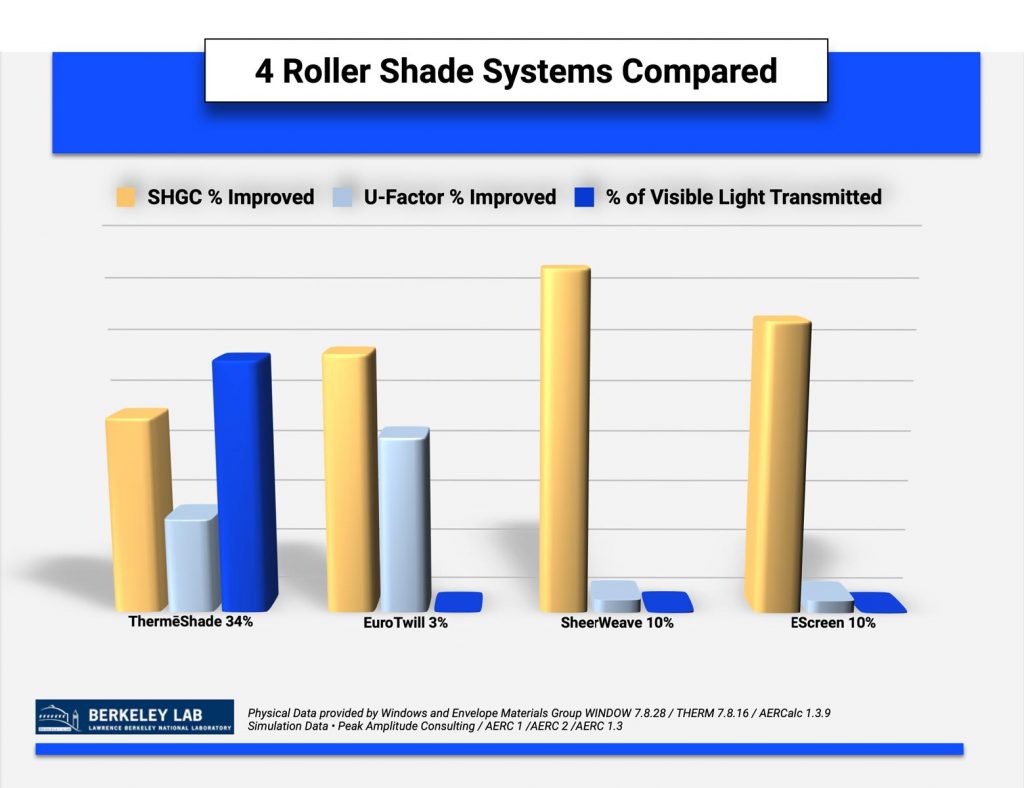
Greater detail is shown in graphs below
Physical Data provided by Windows and Envelope Materials Group WINDOW 7.8.28 / THERM 7.8.16 / AERCalc 1.3.9 Simulation Data • Peak Amplitude Consulting / AERC 1 /AERC 2 /AERC 1.3
